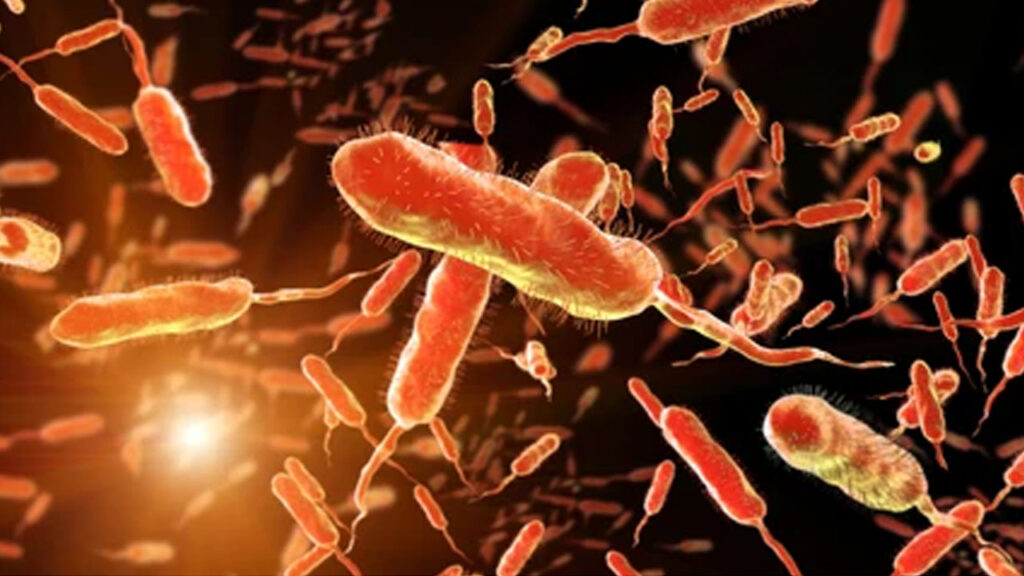 RESEARCHERS have validated the leaves of four plant foods commonly consumed in Nigeria namely Gnetum africanum (Ukazi in Igbo), Gongronema latifolium (Utazi in Igbo), Telfairia occidentalis (fluted pumpkin, Ugu in Igbo), Ocimum gratissimum (scent leaf, Nchuanwu in Igbo) for preventing cancers.
RESEARCHERS have validated the leaves of four plant foods commonly consumed in Nigeria namely Gnetum africanum (Ukazi in Igbo), Gongronema latifolium (Utazi in Igbo), Telfairia occidentalis (fluted pumpkin, Ugu in Igbo), Ocimum gratissimum (scent leaf, Nchuanwu in Igbo) for preventing cancers.
The study, published in Journal of Medicinal Food Plants, is titled “Preliminary qualitative screening for cancer chemopreventive agents in Telfairia occidentalis Hook.f., Gnetum africanum Welw., Gongronema latifolium Benth and Ocimum gratissimum L. from Nigeria.
The researchers, from the Department of Biological Sciences, Biochemistry and Molecular Biology Unit, Covenant University, Nigeria were led by Emeka E.J. Iweala.
Earlier studies had endorsed extracts from plants, such as Serenoa repens, Urtica dioica, Pygeum africanum, Secale cereale, Curcubita pepo, Hypoxis rooperi, Piper cubeba, Bixa orellana, coconut (Cocos nucifera), and fluted pumpkin (Telfairia occidentalis), as potent botanicals in the management of prostatic diseases.
Also, another study published in the International Research Journal of Biochemistry and Bioinformatics reviewed the anti-cancer properties of some plants used in traditional medicine in Nigeria.
A team of researchers from the Department of Chemical Sciences, Federal University Otuoke, Bayelsa State, led by Taye T. Alawode, identified onion, shallot, pineapple, garlic, Resurrection plant, lime, wormwood, Sodom apple, red palm oil, sausage tree, mango tree, sour-sop, bitter leaf, among others as potent against cancers.
It has also been shown that pumpkin seed oil and phytosterol-F can block testosterone/prazosin-induced prostate growth in rats. Iweala wrote: “The four plant foods showed the presence of phenoilc substances. G. latifoluim had the highest amount followed by G. africanum, T. occidentalis and O. gratissimum had the least.
All the samples indicated the presence of flavonoids. The level of flavonoids was highest in G. latifolium and G. africanum. All the plant food samples showed the presence of phytosterol and chlorophyll. G. latifolum contained a higher level of phytosterol and chlorophyll than the other samples.
Tannins were found to be present in all the samples, with O. gratissimum and T. occidentalis having higher levels than G. africanum and G. latifolium.
All the samples showed the presence of saponins. Only T. occidentalis showed the presence of alkaloids, while others showed slight traces of alkaloids.
Generally, glycosides were found to be present in all the samples with O. gratissimum showing very slight traces. All the samples were positive for cyanogenic glycoside while all except G. latifolium were seen to contain cardiac glycosides.
Anthracene glycosides were absent in all the samples. All the samples showed presence of anthocyanidins/chalcones with G. africanum showing the highest level.
“The concept of chemoprevention has assumed a global significance as a result of its acceptance in the management, prevention and treatment of a wide range of life threatening diseases such as cancer, diabetes and coronary diseases and in the maintenance of good health.
The enormous benefits to public health which the lowering of the incidence of cancer can generate are invaluable. A large number of chemopreventive agents identified in plants have considerably contributed to the concept of cancer prevention and control.
The chemical diversity of these naturally occurring substances increases the likelihood of their existence in tropical plant foods. There is an abundance of plant foods in the tropics especially Nigeria and their consumption by large tropical subpopulations can be correlated with the relatively and comparatively low incidence of cancers in the tropics.
“The four plant foods investigated namely Gnetum africanum, Gongronema latifolium, Telfairia occidentalis and Ocimum gratissimum are common tropical plant foods whose leaves are consumed especially in South Eastern Nigeria.
The preliminary screening of these plant foods using simple chemical tests, paper chromatography showed that they contain some known potential cancer chemo-preventive agents such as flavonoids, tannins, chalcones, anthocyanidins, phytos terols, chlorophyll, saponins, glycosides and alkaloids.
The presence of these bio- active phytochemicals have been reported in several African plants. “Phytosterols which are terpenoid compounds have been reported to inhibit certain cancers in animals.
Flavoniods, anthocyanadins and chalcones are ubiquitous phytochemicals with pronounced bioactivity. Some of these compounds such as apigenin and licochalcone have showed chemopreventive properties against several cancers.
Saponins such as diosgenin have been found to have therapeutic and chemo-preventive effects. Tannins consumed in large quantities as fruits and vegetables on a daily basis such as ellagitannins are also effective against some cancers.
The chemo-preventive properties of alkaloids and glycosides have al- so been reported. Chlorophylin found in chlorophyll produces an anti- promoting effect on skin cancer in mice.
All the four plants almost had similar constituents of these substances except for alkaloids, which was only prominent in Telfairia occidentalis. These chemopreventive agents are able to enhance host protective systems such as detoxification enzymes against carcinogens.
Combinatorial effects are even more effective due to the synergistic actions of phytochemicals.” Cancer is one of the leading causes of death worldwide.
Cancer control involves concerted actions aimed at reducing the incidence and death that is associated with it. Chemoprevention is one of the best strategies employed in cancer control and has evolved into one of the most exciting and promising area in cancer research.
Chemoprevention involves the use of natural and synthetic compounds to inhibit, reduce or reverse carcinogenenesis.
A large number of potential chemo-preventive agents have been identified from epidemiological surveys, experimental, preclinical and clinical observation and structural homology with known chemo-preventive agents.
In recent years, dietary constituents especially from plant foods have been found to protect against the occurrence of cancer. Some of these naturally occurring compounds include phenolic compounds, flavonoids, terpenoids, carotenoids, phytosterols, isothiocyanates and other phytochemicals.
The me chanisms underlying chemoprevention involves anti-oxidant, anti-inflammatory, immune-enhancing, and anti-hormone effects. Other possible mechanisms include modification of drug-metabolizing enzymes, and influences on cell cycling and differentiation, induction of apoptosis, and suppression of proliferation and angiogenesis that play a role in the initiation and secondary modification of neoplastic development.
Plant foods including vegetables and fruits are largely consumed by tropical subpopulations. Tropical plant foods elaborate an array of nutrient and non-nutrient substances with structural and chemical diversity and bio- logical activity capable of conferring prevention against cancer.
Another study published in Tropical Journal of Pharmaceutical Research by Malaysian and Nigerian researchers concluded: “The medicinal potential of the leaf and seed (oil) of Telfairia occidentalis is no longer in doubt.
It is now obvious that the plant has been proven to possess beneficial antioxidant, anti-diabetic, hepato-protective, haematological, antiplasmo- dial, antimicrobial, testiculoprotective, anticancer, antiinflammatory, anxiolytic and sedative properties.
Many of these activities confirm the claims of herbal medical practioners, although clinical tests, using human subject, still need to be done. Many researchers have also attributed some of the medicinal activities of the plant to the high level of antioxidant components (such as phenolics, flavonoids, Vitamins C and E).”
The study is titled “A Review of the Pharmacological and Biological Activities of the Aerial Parts of Telfairia occidentalis Hook.f. (Cucurbitaceae).” The researchers Olorunfemi A Eseyin, Munavvar A Satta and Hassaan A Rathore are from Hypertension and Cardiovascular Physiology Research Laboratory, School of Pharmaceutical Sciences, University Sains Malaysia, and Department of Pharmaceutical and Medicinal Chemistry, Faculty of Pharmacy, University of Uyo, Nigeria. Anticancer activity Reports show that Telfairia occidentalis possesses anticancer potential.
The crude extract of the seed of Telfairia occidentalis showed anticancer activity by prominently inhibiting oxidative burst activity in whole blood, isolated polymorphonuclear cells (PMNs) and mononuclear cells (MNCs).
The potency order was hexane fraction > dichloromethane fraction > ethyl acetate fraction > butanol fraction > aqueous fraction > crude extract. The seed of T. occidentalis decreased serum prostatic acid phosphatase concentrations, increased testosterone: estradiol ratio, and reduced the mass and secretory activity of the enlarged prostate, thereby proving to be useful in managing experimental benign prostatic hyperplasia in rats.
It reduced the mean relative prostate weight, protein content (mg/tissue) of the rats’ prostates and serum prostatic acid phosphatase, inhibiting the induction of BPH in rats, possibly by increasing the level of serum testosterone while concomitantly lowering the level of serum estradiol.

The leaves of Telfairia occidentalis showed the presence of phenolic compounds, flavonoids, phytosterols, tannins, saponins, chlorophyll and glycosides, which have been reported to exhibit chemosuppressive activity.
There have been recent reports linking the anti- oxidative and superoxide scavenging activities of individual active components of herbal medicine with their anti-cancer properties.
Herbal medicine is also used in nutrient supplement for anti- cancer activity. Numerous in vitro studies of herbal medicine on different cell lines and in vivo study of herbal medicine have also been reported.
Since the high antioxidant property of Telfairia occidentalis has been established, it is therefore likely that the cancer chemopreventive activity of the seed could be attributed to the antioxidant components and activity of the plant.
Anti-inflammatory and analgesic activity The leaf of T. occidentalis significantly inhibited Carrageenan-induced oedema in the sub-planar hind paw of vegetable extracts.
The seed extract showed significant anti-inflammatory activity against egg albumin and xylene-induced oedema and exhibited a dose-dependent inhibition of pains in acetic acid-induced writhing, formalin-induced hind paw licking and thermal- induced pain models.
The inhibition of neurogenic and non-neurogenic pains as well as narcotic pains by the extract may in part explain the mechanisms of its action. Telfairia occidentalis is widely cultivated for its palatable and nutritious leaves.
The leaves when compared with other tropical vegetables have high nutritive value. Its protein content (21 per cent) is higher than those of other commonly used leafy vegetables.
The leaves are rich in vitamins and minerals such as calcium (Ca), phosphorus (P), Iron (Fe) etc. The seed is also eaten as food. The oil obtained from the seed is used in cooking.
A titled “Management of experimental Benign Prostatic Hyperplasia (BPH) in rats using a food-based therapy containing Telfairia occidentalis seeds” concluded: “The usefulness of diet containing Telfairia occidentalis seeds, in managing benign prostatic hyperplasia (BPH) in rats was studied.
Twenty male Wistar rats were divided into four equal groups. BPH was induced by sub-cutaneous injection of dihydrotestosterone (DHT) and estradiol valerate (ratio, 10:1) every other day for 28 days.
Rats in the test group were placed on the test diet for seven days following disease induction. One control group (DC) was fed on a normal diet for seven days following disease induction.
“Two other control groups, HC and HDC, were given sub-cutaneous olive oil (vehicle) for the same duration, and placed on the test diet and normal diet, respectively.
Markers of BPH, and hormone profile were determined using standard methods. “The results show that relative prostate weight and protein content of the prostates were lower [albeit not significantly (p>0.05)] in the test group, relative to the DC group.
Serum prostatic acid phosphatase concentrations (U/L) decreased significantly (p<0.05) from 2.9 ± 0.2 in the DC group to 2.1 ± 0.7 in the test group.
Histological findings corroborate these data. The testosterone: estradiol ratio (×103) was increased from 4.0 ± 0.2 in the DC group to 4.6 ± 0.2 in the test group. The test diet reduced the mass and secretory activity of the enlarged prostate and may act by increasing the testosterone: estradiol ratio.”
The study was published in African Journal of Traditional, Complementary & Alternative Medicine. General health benefits derived from Telfairia occidentalis Telfairia occidentalis is an important staple vegetable grown in Nigeria.
The plant produces luxuriant edible green leaves, which are rich in iron and vitamins. Stems of the plants have branching, long twisting tendrils and the leaves are divided into three to five leaflets with the terminal leaflets up to 15 cm long, while the male plant is grown principally for leaves and seeds, which are important soup condition.
Recent studies have shown that Telfairia occidentalis leaf is rich in minerals (such as iron, potassium, sodium, phosphorus, calcium and magnesium), antioxidants, vitamins (such as thiamine, riboflavin, nicotinamide and ascorbic acid, phyto-chemicals such as phenols.
Harvesting of fluted pumpkin takes place 120-150 days after sowing. The leaves contain essential oils, vitamins; root contains cucubitacine, sesquiterpene, lactones.
The young leaves sliced and mixed with coconut water and salt are stored in a bottle and used for the treatment of convulsion in ethno medicine. The leaf extract is useful in the management of cholesterolemia, liver problems and impaired defense immune systems.
The roots are used as rodenticide and an ordeal poison. The essential amino acids contents compared favorably with those of important legumes. The amino acid profile of T. occidentalis had also been shown to be very rich and includes alanine, aspartate, glycine, glutamine, histidine, lysine, methionine, tryptophan, cystine, leucine, arginine, serine, threonine, phenylalanine, valine, tyrosine and isoleucine.
Emeka and Obidoa study reveals that the long term feeding of T. occidentalis-supplemented diet caused a significant increase in weight of animals, which may be due to its content of rich nutrients.
The seeds are highly nutritious and are roasted or boiled and eaten like the seeds of breadfruit (Treculia); they are also sometimes used as soup thickeners.
The seed is very rich in oil, especially unsaturated fatty acids, which form 61 per cent of the oil. Akubue et al. and Taylor et al. have documented that fluted plumpkin seeds are a good source of four minerals required in human nutrition.
There report showed that the seed contained 29 per cent oil and 30 per cent protein. Asiegbu reported fluted pumpkin seed contain 47 per cent oil and 31 per cent protein.
The protein was said to be markedly deficient in the sulphur amino acid. Longe et al. reported that fluted plumpkin seeds had 53 per cent fat, 22 per cent protein, three per cent fibre, 15 per cent carbohydrates and two per cent ash.
Oyolu observed that vegetables will continue to remain the primary source of proteins, minerals and vitamins in African countries, he noted that leaves and edible shoots of fluted pumpkin together contain 85 per cent moisture, while the dry portion of what is usually consumed contains 11 per cent crude protein, 25 per cent carbohydrate, three per cent oil, 11 per cent ash and as much as 700 ppm iron.
The results of the study carried out by Christian shows that the seed contained essential nutrients in significant amount that can supplement other foods.
The levels of crude protein (3.47 per cent), crude fat (31.38 per cent), moisture (10.93), Ash (2.02 per cent), carbohydrate (50.08 per cent), fibre (2.12 per cent), calcium (280 μg g-1), phosphorus (2100 μg g-1), iron (69 μg g-1), sodium (10.80 μg g-1), potassium (1280 μg g-1), vitamin A (890 IU) and vitamin C (0.7 μg g-1) detected in the seed were compared with nutritional composition of some plant foods in Nigeria.
The study shows that the seed of Telfairia occidentalis Hook F. is high in carbohydrate, fat and phosphorus. The seed also contained levels of vitamin A, which can supplement other dietary sources.
The oil of Telfairia occidentalis seeds have a high iodine values compared to palm oil which indicates that the oil has a high content of unsaturated fatty acids relative to palm oil. This suggests that it may be used as edible oil for cooking or manufacturing of margarine.
The high protein content in leaves of plants such as Telfairia occidentalis could have supplementary effect for the daily protein requirement of the body.
The symptoms of protein energy malnutrition such as Kwashiorkor and Marasmus were rarely observed among dwellers in region where adequate amount of protein is obtained from fruits/seeds and leaves of plants rich in proteins such as T. occidentalis. Fasuyi and Nonyerem investigations shows that Telfairia occidentalis leaf meal caused increased growth in birds.
Adaramoye et al. reported that Telfairia occidentalis leaves has hypolipdemic effect and may be a useful therapy in hypercholestolemia. This confirms the research work of Eseyin et al.
The vitamin A content and consumption pattern of some green leafy vegetables (which includes Telfairia occidentalis) among pregnant women in Calabar, Nigeria was investigated by Williams et al.
They observed that Telfairia occidentalis has the highest vitamin A content, which is adequate enough to sustain their vitamin A requirement. The fruits of Telfairia occidentalis have been utilized in the production of marmalade.
The use of Telfairia occidentalis in reproduction and fertility in traditional medicine is gradually becoming a thing of interest in medical science. A study carried out by Nwangwu and his colleague shows that Telfairia occidentalis has the potential to regenerate testicular damage and also increase spermatogenesis. However, more research work is required to establish this observation.










